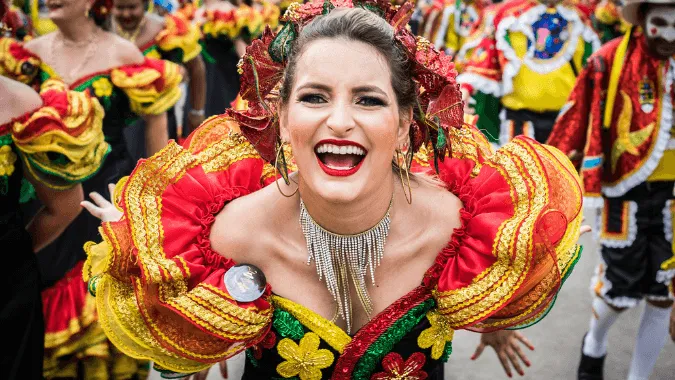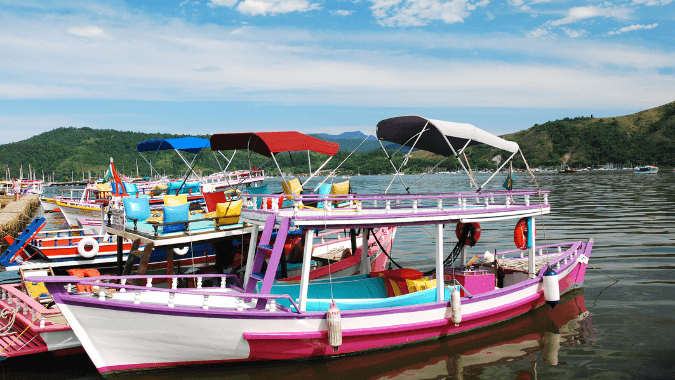Buenos Aires
![Pueblos Originarios flag]() Members of the Indian communities of Argentina raising the Pueblos Originarios (originary communities) flag[/caption] Whilst visiting the beautiful city of Buenos Aires, you will notice the diverse mix of people and cultural influences. Obviously, Buenos Aires has its very own, distinct characteristics and Buenos Aires Travel on the one hand, is all about steaks, tango, discovering the city’s South American temperament and its unique accent of Castellano. However immigration in Buenos Aires has played a huge role in forming the city’s identity and its porteño culture; From the very first immigrants in the 16th century (during Spanish colonization), to the arrival of thousands of Europeans fleeing the first and second world wars, right up to the more recent immigration from Asia and neighbouring South American countries. In an incredible population boom between 1895 and 1915 the number of people living in Argentina almost doubled from 4 million to 7.9 million – in a mere 20 years! At the turn of the last century, people from all over Europe came to Buenos Aires by boat, with many Eastern Europeans, Russians and also Armenians, Syrians and Lebanese arriving at the city’s harbour. Due to the high levels of immigration in Buenos Aires, in the 1920's half of Buenos Aires' population were immigrants! However, without a doubt, the majority of the first wave of immigration in Buenos Aires came from Italy. Nowadays it is estimated that almost half of the entire population of Argentina have some form of Italian descent. This Italian heritage is evident throughout Buenos Aires; Lunfardo for example, a local slang, which is hugely influenced by the Italian language and was famously eternalized in Buenos Aires’ tango lyrics, is still used today and many of its expressions are clearly noticeable in Buenos Aires mainstream colloquial dialect. In addition, porteños - not unlike their Italian ancestors, they tend to talk a lot with their hands – gesticulating and waving, eager to get their point across! Of course, in almost every Buenos Aires Restaurant, the menus are filled with Pizzas, Milanesas, Fainá and Polenta. [caption id="attachment_6314" align="alignnone" width="667"]
Members of the Indian communities of Argentina raising the Pueblos Originarios (originary communities) flag[/caption] Whilst visiting the beautiful city of Buenos Aires, you will notice the diverse mix of people and cultural influences. Obviously, Buenos Aires has its very own, distinct characteristics and Buenos Aires Travel on the one hand, is all about steaks, tango, discovering the city’s South American temperament and its unique accent of Castellano. However immigration in Buenos Aires has played a huge role in forming the city’s identity and its porteño culture; From the very first immigrants in the 16th century (during Spanish colonization), to the arrival of thousands of Europeans fleeing the first and second world wars, right up to the more recent immigration from Asia and neighbouring South American countries. In an incredible population boom between 1895 and 1915 the number of people living in Argentina almost doubled from 4 million to 7.9 million – in a mere 20 years! At the turn of the last century, people from all over Europe came to Buenos Aires by boat, with many Eastern Europeans, Russians and also Armenians, Syrians and Lebanese arriving at the city’s harbour. Due to the high levels of immigration in Buenos Aires, in the 1920's half of Buenos Aires' population were immigrants! However, without a doubt, the majority of the first wave of immigration in Buenos Aires came from Italy. Nowadays it is estimated that almost half of the entire population of Argentina have some form of Italian descent. This Italian heritage is evident throughout Buenos Aires; Lunfardo for example, a local slang, which is hugely influenced by the Italian language and was famously eternalized in Buenos Aires’ tango lyrics, is still used today and many of its expressions are clearly noticeable in Buenos Aires mainstream colloquial dialect. In addition, porteños - not unlike their Italian ancestors, they tend to talk a lot with their hands – gesticulating and waving, eager to get their point across! Of course, in almost every Buenos Aires Restaurant, the menus are filled with Pizzas, Milanesas, Fainá and Polenta. [caption id="attachment_6314" align="alignnone" width="667"]![Italian immigrants from Genoa set up La Boca Italian immigrants from Genoa set up La Boca]() Typical house of the Italian immigrants in La Boca / source[/caption]Another notable immigration in Buenos Aires was that of the Jewish immigrants escaping persecution. Buenos Aires’ Jewish population is the largest Jewish community in Latin America and the seventh largest in the world. The Jewish community plays a big role in the city’s set up and the state of Buenos Aires’ officially recognizes the Jewish holidays of Rosh Hashanah, Yom Kippur and Passover for their Jewish residents. [caption id="attachment_6315" align="aligncenter" width="375"]
Typical house of the Italian immigrants in La Boca / source[/caption]Another notable immigration in Buenos Aires was that of the Jewish immigrants escaping persecution. Buenos Aires’ Jewish population is the largest Jewish community in Latin America and the seventh largest in the world. The Jewish community plays a big role in the city’s set up and the state of Buenos Aires’ officially recognizes the Jewish holidays of Rosh Hashanah, Yom Kippur and Passover for their Jewish residents. [caption id="attachment_6315" align="aligncenter" width="375"]![Synagogue in Buenos Aires Sinagoga de la Congregación Israelita Argentina]() Synagogue in Buenos Aires / source[/caption] More recent immigration to Buenos Aires has brought many economic immigrants from Asia, predominantly from Korea and China. The city even has its own China Town. Not as grand as New York’s version, but well worth a visit. A trip to the Barrio Chino in the neighbourhood of Belgrano makes for a great day trip in Buenos Aires, especially if you are looking for something a little bit different and fancy a plate of delicious Chinese noodles, as a change to the ever-present Pizzas and Milanesas. [caption id="attachment_6316" align="alignnone" width="702"]
Synagogue in Buenos Aires / source[/caption] More recent immigration to Buenos Aires has brought many economic immigrants from Asia, predominantly from Korea and China. The city even has its own China Town. Not as grand as New York’s version, but well worth a visit. A trip to the Barrio Chino in the neighbourhood of Belgrano makes for a great day trip in Buenos Aires, especially if you are looking for something a little bit different and fancy a plate of delicious Chinese noodles, as a change to the ever-present Pizzas and Milanesas. [caption id="attachment_6316" align="alignnone" width="702"]![Barrio Chino in the neighbourhood of Belgrano Barrio Chino in the neighbourhood of Belgrano]() The Chinese quarter in the neighbourhood of Belgrano / source[/caption]The city of Buenos Aires has a fascinating history. We recommend you get the most out of your stay in Buenos Aires and join a popular guided city tour to discover the city’s rich culture. There are many to choose from: Architectural tours, where the influence of the Spanish immigrants can be clearly seen, there are also tours that specialize in the history of the Jewish community and tours that specifically focus on tango in the neighbourhood of La Boca and Italian immigration in Buenos Aires Visit our website Bsas4u.com and find a wide range of things to do in Buenos Aires.
The Chinese quarter in the neighbourhood of Belgrano / source[/caption]The city of Buenos Aires has a fascinating history. We recommend you get the most out of your stay in Buenos Aires and join a popular guided city tour to discover the city’s rich culture. There are many to choose from: Architectural tours, where the influence of the Spanish immigrants can be clearly seen, there are also tours that specialize in the history of the Jewish community and tours that specifically focus on tango in the neighbourhood of La Boca and Italian immigration in Buenos Aires Visit our website Bsas4u.com and find a wide range of things to do in Buenos Aires.
Following the traces of the Immigration in Buenos Aires
Tags:
immigration history buenos aires
buenos aires history
Buenos Aires commemorated every 12 of October the Dia del Respeto a la Diversidad Cultural (Day of respect for cultural diversity); an official national bank holiday that celebrates immigration in Buenos Aires and the city’s cultural diversity - as its mouthful of a name obviously suggests.
[caption id="" align="aligncenter" width="330"] Members of the Indian communities of Argentina raising the Pueblos Originarios (originary communities) flag[/caption] Whilst visiting the beautiful city of Buenos Aires, you will notice the diverse mix of people and cultural influences. Obviously, Buenos Aires has its very own, distinct characteristics and Buenos Aires Travel on the one hand, is all about steaks, tango, discovering the city’s South American temperament and its unique accent of Castellano. However immigration in Buenos Aires has played a huge role in forming the city’s identity and its porteño culture; From the very first immigrants in the 16th century (during Spanish colonization), to the arrival of thousands of Europeans fleeing the first and second world wars, right up to the more recent immigration from Asia and neighbouring South American countries. In an incredible population boom between 1895 and 1915 the number of people living in Argentina almost doubled from 4 million to 7.9 million – in a mere 20 years! At the turn of the last century, people from all over Europe came to Buenos Aires by boat, with many Eastern Europeans, Russians and also Armenians, Syrians and Lebanese arriving at the city’s harbour. Due to the high levels of immigration in Buenos Aires, in the 1920's half of Buenos Aires' population were immigrants! However, without a doubt, the majority of the first wave of immigration in Buenos Aires came from Italy. Nowadays it is estimated that almost half of the entire population of Argentina have some form of Italian descent. This Italian heritage is evident throughout Buenos Aires; Lunfardo for example, a local slang, which is hugely influenced by the Italian language and was famously eternalized in Buenos Aires’ tango lyrics, is still used today and many of its expressions are clearly noticeable in Buenos Aires mainstream colloquial dialect. In addition, porteños - not unlike their Italian ancestors, they tend to talk a lot with their hands – gesticulating and waving, eager to get their point across! Of course, in almost every Buenos Aires Restaurant, the menus are filled with Pizzas, Milanesas, Fainá and Polenta. [caption id="attachment_6314" align="alignnone" width="667"]
Members of the Indian communities of Argentina raising the Pueblos Originarios (originary communities) flag[/caption] Whilst visiting the beautiful city of Buenos Aires, you will notice the diverse mix of people and cultural influences. Obviously, Buenos Aires has its very own, distinct characteristics and Buenos Aires Travel on the one hand, is all about steaks, tango, discovering the city’s South American temperament and its unique accent of Castellano. However immigration in Buenos Aires has played a huge role in forming the city’s identity and its porteño culture; From the very first immigrants in the 16th century (during Spanish colonization), to the arrival of thousands of Europeans fleeing the first and second world wars, right up to the more recent immigration from Asia and neighbouring South American countries. In an incredible population boom between 1895 and 1915 the number of people living in Argentina almost doubled from 4 million to 7.9 million – in a mere 20 years! At the turn of the last century, people from all over Europe came to Buenos Aires by boat, with many Eastern Europeans, Russians and also Armenians, Syrians and Lebanese arriving at the city’s harbour. Due to the high levels of immigration in Buenos Aires, in the 1920's half of Buenos Aires' population were immigrants! However, without a doubt, the majority of the first wave of immigration in Buenos Aires came from Italy. Nowadays it is estimated that almost half of the entire population of Argentina have some form of Italian descent. This Italian heritage is evident throughout Buenos Aires; Lunfardo for example, a local slang, which is hugely influenced by the Italian language and was famously eternalized in Buenos Aires’ tango lyrics, is still used today and many of its expressions are clearly noticeable in Buenos Aires mainstream colloquial dialect. In addition, porteños - not unlike their Italian ancestors, they tend to talk a lot with their hands – gesticulating and waving, eager to get their point across! Of course, in almost every Buenos Aires Restaurant, the menus are filled with Pizzas, Milanesas, Fainá and Polenta. [caption id="attachment_6314" align="alignnone" width="667"] Typical house of the Italian immigrants in La Boca / source[/caption]Another notable immigration in Buenos Aires was that of the Jewish immigrants escaping persecution. Buenos Aires’ Jewish population is the largest Jewish community in Latin America and the seventh largest in the world. The Jewish community plays a big role in the city’s set up and the state of Buenos Aires’ officially recognizes the Jewish holidays of Rosh Hashanah, Yom Kippur and Passover for their Jewish residents. [caption id="attachment_6315" align="aligncenter" width="375"]
Typical house of the Italian immigrants in La Boca / source[/caption]Another notable immigration in Buenos Aires was that of the Jewish immigrants escaping persecution. Buenos Aires’ Jewish population is the largest Jewish community in Latin America and the seventh largest in the world. The Jewish community plays a big role in the city’s set up and the state of Buenos Aires’ officially recognizes the Jewish holidays of Rosh Hashanah, Yom Kippur and Passover for their Jewish residents. [caption id="attachment_6315" align="aligncenter" width="375"] Synagogue in Buenos Aires / source[/caption] More recent immigration to Buenos Aires has brought many economic immigrants from Asia, predominantly from Korea and China. The city even has its own China Town. Not as grand as New York’s version, but well worth a visit. A trip to the Barrio Chino in the neighbourhood of Belgrano makes for a great day trip in Buenos Aires, especially if you are looking for something a little bit different and fancy a plate of delicious Chinese noodles, as a change to the ever-present Pizzas and Milanesas. [caption id="attachment_6316" align="alignnone" width="702"]
Synagogue in Buenos Aires / source[/caption] More recent immigration to Buenos Aires has brought many economic immigrants from Asia, predominantly from Korea and China. The city even has its own China Town. Not as grand as New York’s version, but well worth a visit. A trip to the Barrio Chino in the neighbourhood of Belgrano makes for a great day trip in Buenos Aires, especially if you are looking for something a little bit different and fancy a plate of delicious Chinese noodles, as a change to the ever-present Pizzas and Milanesas. [caption id="attachment_6316" align="alignnone" width="702"] The Chinese quarter in the neighbourhood of Belgrano / source[/caption]The city of Buenos Aires has a fascinating history. We recommend you get the most out of your stay in Buenos Aires and join a popular guided city tour to discover the city’s rich culture. There are many to choose from: Architectural tours, where the influence of the Spanish immigrants can be clearly seen, there are also tours that specialize in the history of the Jewish community and tours that specifically focus on tango in the neighbourhood of La Boca and Italian immigration in Buenos Aires Visit our website Bsas4u.com and find a wide range of things to do in Buenos Aires.
The Chinese quarter in the neighbourhood of Belgrano / source[/caption]The city of Buenos Aires has a fascinating history. We recommend you get the most out of your stay in Buenos Aires and join a popular guided city tour to discover the city’s rich culture. There are many to choose from: Architectural tours, where the influence of the Spanish immigrants can be clearly seen, there are also tours that specialize in the history of the Jewish community and tours that specifically focus on tango in the neighbourhood of La Boca and Italian immigration in Buenos Aires Visit our website Bsas4u.com and find a wide range of things to do in Buenos Aires.
Tags:
immigration history buenos aires
buenos aires history
Search
-
Exciting 4x4 route: São Luís and FortalezafromUS$1,014
-
Vila Gale Mares Resort All InclusivefromUS$100
-
Ecotourism in Chapada DiamantinafromUS$672
-
All inclusive Vila Gelé Cumbuco ResortfromUS$999
-
Full Day Cafayate Tour from SaltafromUS$68
-
Transfer Aeroparque - Buenos AiresfromUS$46
-
-
Transfer Ezeiza - AeroparquefromUS$91
-
-
Excursion to El Chaltén from El CalafatefromUS$153
-
-
-
-
-
-
-
-
-
-
-
Daytours4u © 2012-2019. Use of this website constitutes acceptance of the Terms & Conditions.
Open Chat
Hello, How May I Help You?



